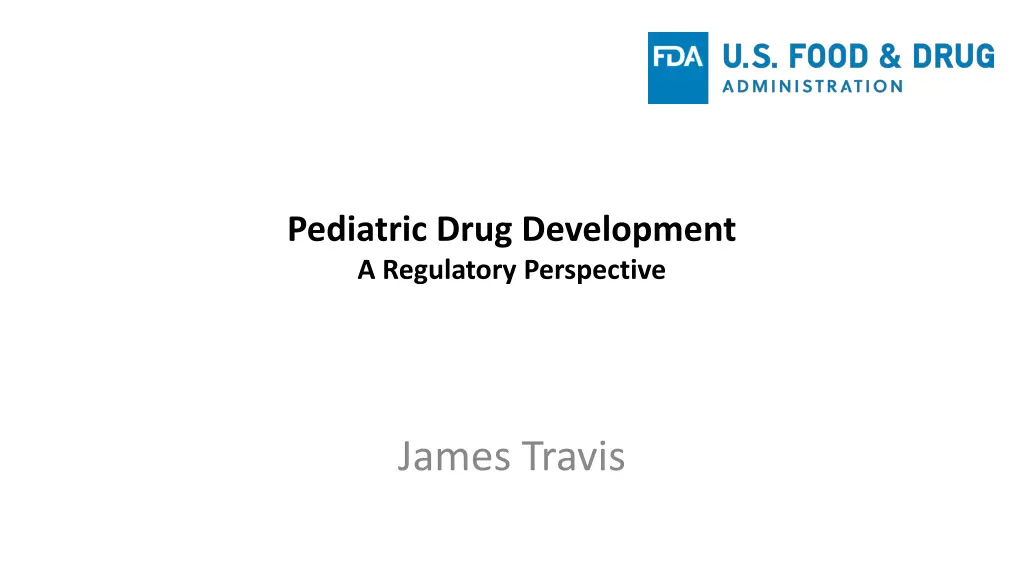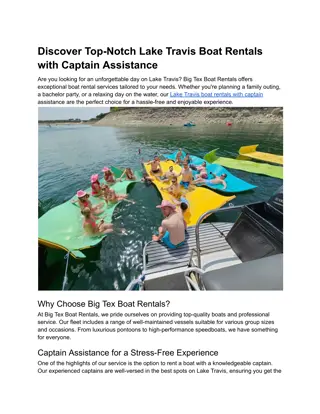
Pediatric Drug Development Regulations Overview
Explore the regulatory perspective on pediatric drug development, focusing on pediatric regulations, common issues, options for control arms, recent legislation, and regulatory objectives. Learn about the Pediatric Research Equity Act (PREA) and the Best Pharmaceuticals for Children Act (BPCA) requirements, process, and implications for pediatric studies.
Download Presentation

Please find below an Image/Link to download the presentation.
The content on the website is provided AS IS for your information and personal use only. It may not be sold, licensed, or shared on other websites without obtaining consent from the author. If you encounter any issues during the download, it is possible that the publisher has removed the file from their server.
You are allowed to download the files provided on this website for personal or commercial use, subject to the condition that they are used lawfully. All files are the property of their respective owners.
The content on the website is provided AS IS for your information and personal use only. It may not be sold, licensed, or shared on other websites without obtaining consent from the author.
E N D
Presentation Transcript
Pediatric Drug Development A Regulatory Perspective James Travis 1
Disclaimer This speech reflects the views of the author and should not be construed to represent FDA s views or policies. 2
Overview Pediatric regulations Common issues with pediatric drug development Options for control arms Overview of some recent legislation 3
Regulatory Objectives Substantial evidence that the drug will have the effect it purports or is represented to have under the conditions of use prescribed, recommended, or suggested in the proposed labeling thereof - (21 U.S.C 355 (d)) 4
Pediatric Research Equity Act (PREA) PREA gives FDA the authority to require pediatric studies in certain drugs and biological products. The goal of the studies is to obtain pediatric labeling for the product. Can only require studies in the pediatric equivalent of the indication being sought in adults. There is a penalty for non-compliance. 6
PREA Requirements PREA applies to a product whenever the following is applicable: New indication New dosage form New dosing regimen New route of administration New active ingredient 7
PREA Process Submit an initial Pediatric Study Plan (iPSP) no later than 60 days after the End of Phase 2 meeting. Contains an outline of the pediatric studies that the sponsor plans to conduct and any planned deferral or waiver. Objective is to reach agreement with the Agency on the plan The plan will be used to determine the post-marketing requirements. 8
Best Pharmaceuticals for Children Act (BPCA) Provides a six-month exclusivity extension for conducting studies agreed to under a Written Request. Can be requested by submitting a proposed pediatric study request Written request will include all pediatric indications for which there will be an expected public health benefit. 9
Common Issues Hard to recruit pediatric patients Extra ethical requirements Differences in endpoints Different causes for disease 11
Causes of Recruitment Issues Smaller population Logistical issues Study palatability issues 12
Borrowing Historically, extrapolation has been a binary decision - either we can extrapolate or we can t. Methods that borrow efficacy data from adults have been proposed as a method of improving decision making in a non-binary fashion. Requires a subjective decision on how much data to borrow. 14
Example Belimumab Contd Treatment effect prior: Where: ?? is the adult treatment effect estimate ?? ? is the prior weight 2 is the adult variance 16
ICH E11A Paediatric Extrapolation 1. Address and align terminology related to pediatric extrapolation 2. Provide information on various approaches that can be utilized to support the use of pediatric extrapolation 3. Discuss a systematic approach to use of pediatric extrapolation 4. Discuss study designs, statistical analysis, M&S analyses and respective methods 18
Basic Ethical Framework in Pediatrics 1. Children should only be enrolled in research if the scientific and/or public health objective(s) cannot be met through enrolling subjects who can consent personally (i.e., adults). 2. Absent a prospect of direct therapeutic benefit, the research risks to which children are exposed must be low. 3. Children should not be placed at a disadvantage by being enrolled in a clinical trial, either through exposure to excessive risks or by failing to get necessary health care. 4. Vulnerable populations unable to consent (including children) should have a suitable proxy to consent for them. Ethical Challenges in Clinical Trial Design Lessons Learned from DMD November 29, 2016 19
Low Risk 21 CFR 50.50-56 describe the additional safeguards for children in clinical investigations. Frequently, the collection of endpoints does not represent a prospect of direct therapeutic benefit to the patient. 21 CFR 50.53 requires that The Minor increase over minimal risk 20
Ethical Issues with Endpoints E.g. Muscle biopsies as a biomarker in muscular dystrophies: Other than to establish the initial diagnosis, muscle biopsies are not clinically indicated for disease management and do not offer a prospect of direct clinical benefit to the enrolled child 21
CONTROL ARMS 22
Placebo Controls Placebo controls may not be acceptable for several reasons: Ethically problematic if there is an approved treatment and there is morbidity/mortality associated with delaying treatment. Even if it is ethical, it may not be acceptable to the patient or parent if there is an effective treatment. 23
Non-inferiority/Active Controls We often don t have enough data to specify a reliable non-inferiority margin for pediatrics. When we do, we usually need a substantially larger number of patients to establish non- inferiority, which can exacerbate enrollment issues. 24
Historical (External) Controls The inability to eliminate systematic differences between nonconcurrent treatment groups, however, is a major problem with that design 1. There is an unmet medical need; 2. There is a well-documented, highly predictable disease course that can be objectively measured and verified, such as high and temporally predictable mortality; 3. There is an expected drug effect that is large, self-evident, and temporally closely associated with the intervention. 26
21st Century Cures Act The 21st Century Cures Act (Cures Act), signed into law on December 13, 2016, is designed to help accelerate medical product development and bring new innovations and advances to patients who need them faster and more efficiently 28
Cures Act Section 3022 Section 3001 Section 3002 Section 3021 Real World Evidence Patient experience data Patient- focused drug development Novel clinical trial designs 29
Federal Register Notice highlights the goal of facilitating and advancing the use of complex adaptive, Bayesian, and other novel clinical trial designs 30
Complex Innovative Trial Designs Pilot Program 31
Wave Life Sciences submission Placebo augmentation using a Bayesian modeling strategy 32
FDARA FDA published a list of molecular targets that are 1) molecular targets for which existing evidence and/or biologic rationale exist to determine their potential relevance to the growth or progression of one or more pediatric cancers and 2) those targets for which there is evidence that they are not associated with the growth or progression of pediatric tumors for which requirement for early pediatric evaluation of drugs and biologics which are directed at these targets would be waived. 33
References https://www.fda.gov/drugs/development-resources/complex- innovative-trial-designs-pilot-program https://www.fda.gov/science-research/pediatrics/pediatric-ethics https://www.ecfr.gov/cgi-bin/text- idx?SID=dc5b7c64a99fb69d90f21404a5c64633&mc=true&node=sp21. 1.50.d https://www.fda.gov/about-fda/oncology-center-excellence/pediatric- oncology https://www.fda.gov/media/127912/download 34






















